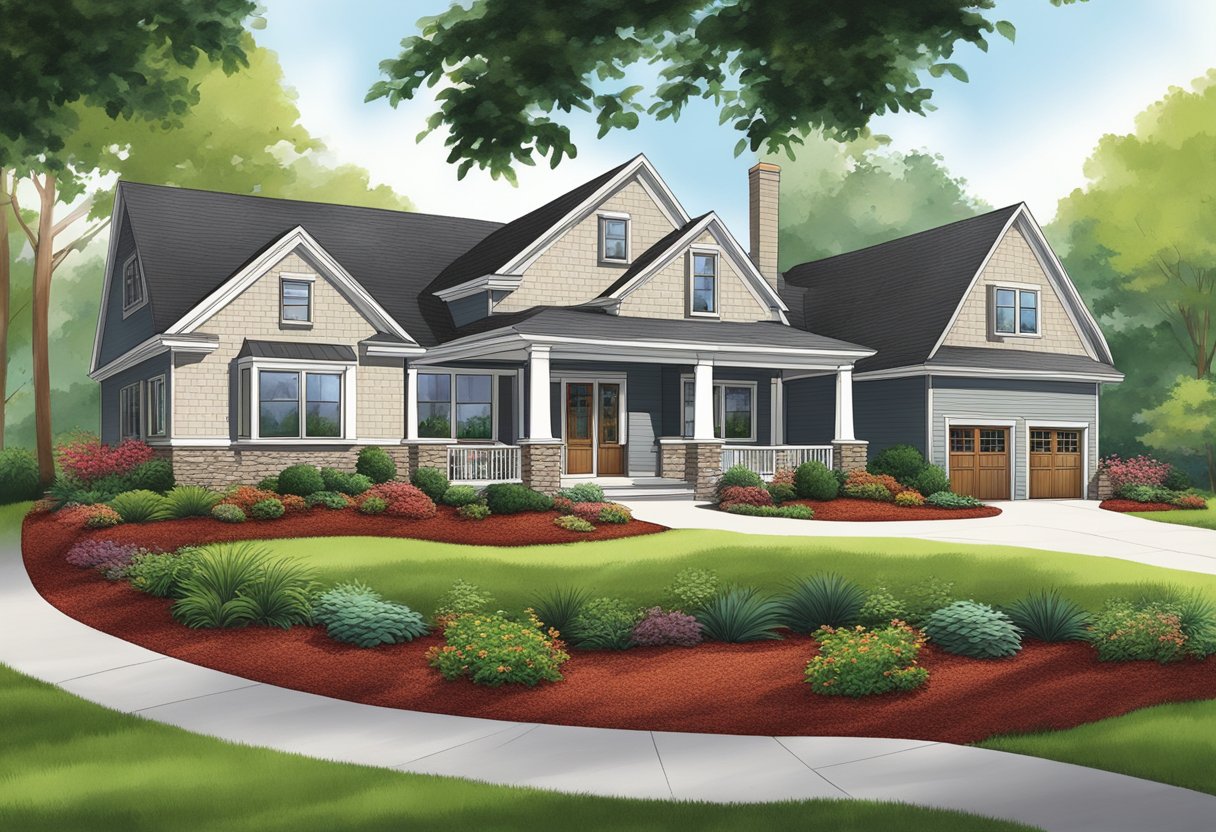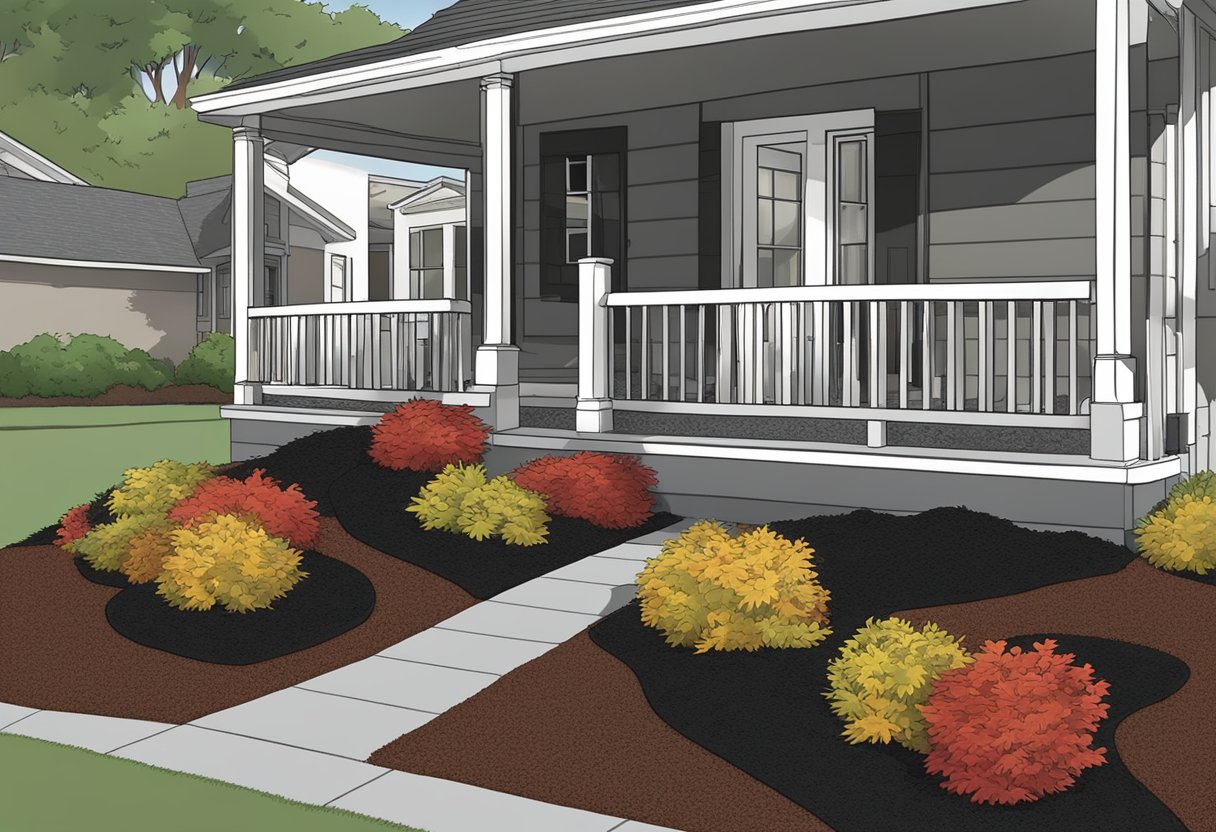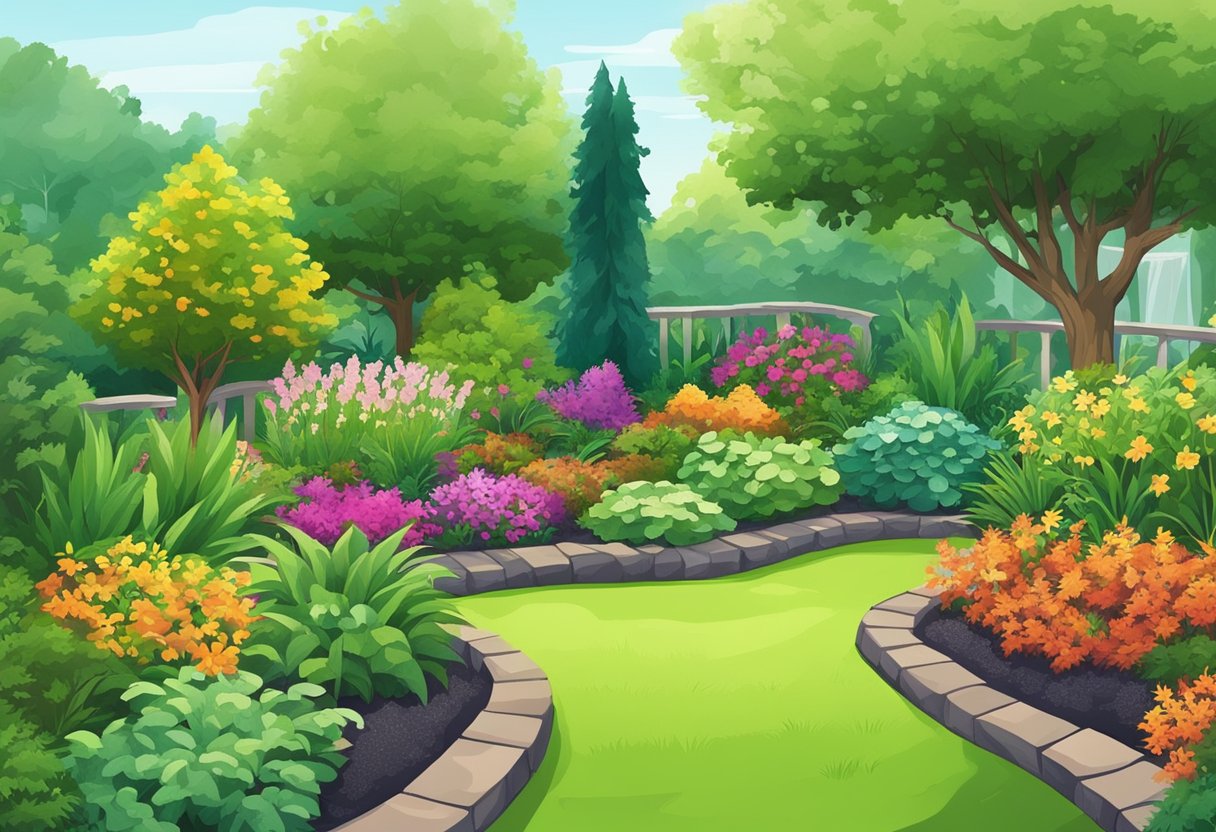Selecting the perfect mulch color is a crucial step when it comes to enhancing our home’s curb appeal. Much like selecting a paint color or decorative accents, the choice of mulch color can significantly impact the aesthetic appeal of our outdoor space. It’s an element that supports the overall landscaping design and complements the colors of both our home and garden. As we consider mulch options, it’s important to understand how different colors can either harmonize with or detract from the existing exterior elements.

Our aim is to find a mulch color that not only enriches the health of our plants but also serves to draw the eye and give our property a clean, finished look. While some colors like rich, dark brown may provide a neutral backdrop for the vibrant greens of a garden, other options like red or black mulch can create bold contrast and depth. We should assess the color of our home’s siding, brick, or stucco, as well as the hues of our plants and hardscapes, to make an informed decision that ties the landscape together.
Ultimately, our goal is to select a mulch color that boosts our home’s curb appeal by complementing its unique features and personal style. Whether we lean towards the natural appearance of wood chips or the vivid statement made by dyed mulch, the priority is to ensure the overall look is cohesive. A thoughtfully chosen mulch color goes beyond the practical benefits of moisture retention and weed suppression; it’s a simple yet powerful tool in crafting a visually appealing home exterior.
Selecting the Right Color Mulch

We understand that the color of mulch can significantly enhance your home’s curb appeal. It needs to be chosen with consideration to complement your house and landscape.
Impact of Mulch Color on Curb Appeal
The color of mulch we choose can either make our plants stand out or blend in with the landscape. For a vibrant effect, consider red mulch, which offers a strong contrast, especially against green foliage. For a subtler look, brown mulch provides a more natural appearance that fits seamlessly into most landscapes.
Color Mulch and Garden Harmony
To achieve garden harmony, we assess the colors of our home, plants, and hardscape elements. For lighter-colored homes, a darker mulch can provide a pleasing contrast. For darker exteriors, a lighter or natural mulch color can soften the appearance.
Practical Benefits of Colored Mulch
Colored mulch goes beyond aesthetics, providing functional advantages. All mulch types help retain soil moisture, reduce watering needs, suppress weeds, and protect against erosion. However, some colored mulches may also include additives like iron for enhanced soil health.
Mulch Material and Color Longevity
While organic mulches break down over time, enriching the soil, their color tends to fade. Inorganic mulches, such as rubber, retain color longer but don’t offer the same soil benefits. We prefer natural, wood-based mulches that balance longevity with organic enrichment.
Calculating Your Mulch Needs
Before purchasing mulch, we use a mulch calculator to determine the correct amount. By inputting the size of your garden beds, we can calculate the cubic yards or bags of mulch needed, ensuring we cover our landscape without waste effectively.
Applying Mulch for Optimal Effect
When applying mulch, the goal is to spread an even layer, typically 2-3 inches deep. This layer is adequate to provide the benefits of mulch while achieving the desired aesthetic. It is important not to pile mulch against plant stems or tree trunks to prevent rot and pest issues.
Enhancing Landscape Design with Mulch

Using mulch in our gardens and landscapes isn’t just about weed control and soil moisture; it’s also a powerful design tool. By selecting the appropriate mulch colors and applying them correctly, we can significantly enhance the appeal of our outdoor spaces.
Mulch as a Design Element
Mulch serves more than a utilitarian purpose; it can be a pivotal design element in our gardens. We use colored mulch to create visual interest and contrast in our landscape. For example:
- Black mulch: Offers a stark contrast, making green foliage and vibrant flowers stand out.
- Brown mulch: Provides a natural look that is versatile for most garden designs.
- Red mulch: Adds a bold pop of color, which can complement plants with red hues in them.
It’s not just about the color; it’s about using it to draw the eye to key features like a flower bed or to frame garden beds around the front door or walkway.
Choosing Mulch for Different Landscape Areas
Different areas of our landscape demand different types of mulch for both aesthetic and functional reasons:
| Area | Suggested Mulch | Benefits |
|---|---|---|
| Walkways | Fine-textured mulch | Provides a clean path, highlighting the walkway |
| Flower Beds | Dark-colored mulch | Enhances the color of flowers and maintains soil moisture |
| Front Yard | Natural-tone mulch | Blends with the surroundings and improves overall appeal |
When selecting mulch, we consider both the color of our home and the primary plants used in our landscape to create harmony.
Maintaining Mulch Color
To ensure our chosen mulch retains its vibrant color, we must maintain it properly:
- Regular replacement: Colored mulch can fade, so we replace it periodically to keep the color fresh.
- Avoid over-watering: Excess water can wash out the color, so it’s essential to balance watering practices.
- Prevent weed growth: Keeping weeds at bay helps maintain the aesthetic appeal of the mulch, which also conserves soil moisture for our plants.
By paying attention to these maintenance tips, we ensure that our mulch remains an asset to our landscape design.